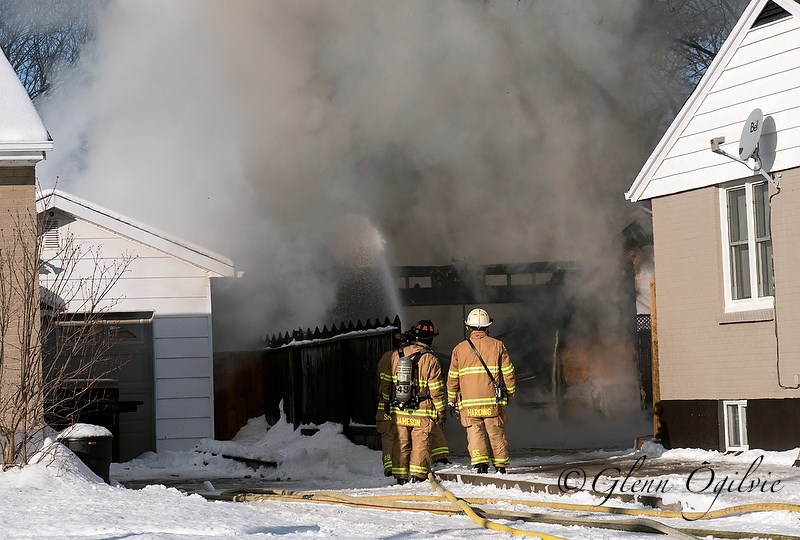Tara Jeffrey
A string of structure fires occurring at the rate of one every three days has stretched the city’s fire crews thin this year.
“They’ve been fast and furious,” fire safety educator Mike Otis said of at least 11 structure fires – including back-to-back call-outs twice in January.
“It’s been kind of a crazy start to the year.”
The latest at press time was an Indian Road North house fire that began accidentally in the kitchen and caused $60,000 damage on Jan. 26.
That occurred one day after a Julia Street fire and four days after one occupant was taken to hospital for smoke inhalation from a house fire on Devine Street, which also started by accident.
A day earlier, firefighters were summoned to a burning house on Nelson Street only to arrive and learn a second home was ablaze on Lydia Street.
Crews from all five stations responded to the twin fires, which caused $80,000 in flame and water damage at each location.
A 31-year-old man seen running between the houses was arrested the next day on arson charges.
Other incidents this year include house fires on Christina and Confederation streets, a garage fire on Blackwell Road, and a motor home blaze that damaged an adjacent home at Indian and Exmouth Streets.
On Jan. 9, firefighters responded in a matter of minutes to both a Mitton Street duplex and a Minto Street garage. Damage estimates in each of the blazes ranged from $100,000 to $200,000, and two firefighters were taken to hospital with upper body injuries.
At least one of the cases was weather-related, said Otis, who stressed space heaters can pose a major risk this time of year.
“There’s been one for sure, where people were trying to stay warm – and probably more than that,” said Otis. “Never use space heaters and extension cords – they’re a bad mix. They overheat and cause fires.”
The appliances should be plugged into the wall, at least three-feet from anything combustible, with nothing hung or draped nearby.
In the wake of eight fire-related deaths in Ontario so far this year, Otis stressed residents ensure they have working smoke alarms on each floor and outside sleeping areas, to have an escape plan, and to install and test carbon monoxide alarms outside all sleeping areas if the home has a fuel-burning appliance, fireplace or attached garage.
Structure fires prompt an automatic three-station response, Otis said, including a backup truck on standby.
“So it’s a lot of scrambling, a lot of moving around, as soon as the call comes in, and then when you get two at once – we’re stretched thin.”
Extreme cold last month was also a factor, he said.
“We’re dealing with, say, -30 degree temperatures and we’re dealing with water. We’ve got to keep the water flowing, keep things from freezing, and we’re getting wet during the fire,” he said.
“So basically, you’re an icicle by the end.
